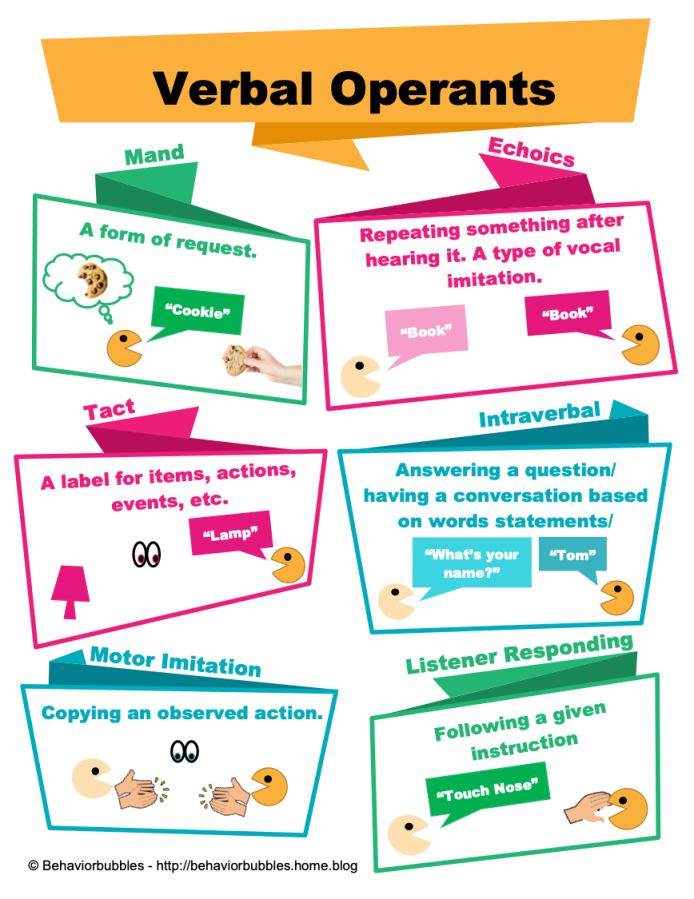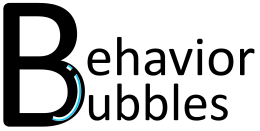Some common terms used by ABA professionals consist of verbal operants. In this post, we will look at the following operants: Mand, Tact, Echoics, Intraverbals, Motor Imitation, & Listener Responding.
Mand
The learner making a request for something they want.
Example: Should the learner want a cookie, they can Mand for the cookie by stating (1) “cookie”; (2) “give me cookie”; (3) “I want cookie”; (4) “chocolate cookie”; (5) “big cookie”; etc.
Tact
The learner stating the label for items, actions, events, etc. seen.
Example: Should the learner see a lamp and state “lamp”, the spoken word “lamp” by the learner is considered a tact.
A combination of prepositions, pronouns, adjectives, and adverbs, etc. can also be included whilst tacting.
Echoics
The learner repeating the sounds/words which were heard by the learner – vocal imitation.
Example: Should the learner hear the word (a)“book” stated by the instructor and repeat the word (b)“book”, the imitation of the spoken word (b)“book” is considered echoics.
Intraverbal
The response provided by the learner following a fill-in, a question, or statement being stated.
Example: Should the instructor state “what is your name?”, the response by the learner “Tom” would be considered the intraverbal response.
Motor Imitation
The learner copying an observed action done by another.
Example: Should the learner observe the instructor/peer clapping their hands, they will imitate the action by clapping their hands.
One use of this operant is to help to teach sign language to learners who are unable to hear or are not vocal.
Listener Responding
The learner following a given instruction by another.
Example: Should the instructor give the instruction “touch nose” to the learner, the learner will follow the given instruction by touching their nose.

Feel free to download the pdf copy of the above infographic below. Happy learning!



One thought on “Verbal Operants”